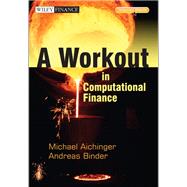
MICHAEL AICHINGER obtained his Ph.D. in Theoretical Physics from the Johannes Kepler University Linz with a thesis on numerical methods in density functional theory and their application to 2D finite electron systems. A mobility grant led him to the Texas A&M University (2003) and to the Helsinki University of Technology (2004). In 2007 Michael Aichinger joined the Industrial Mathematics Competence Center where he has been working as a senior researcher and consultant in the field of quantitative finance for the last five years. He also works for the Austrian Academy of Sciences at the Radon Institute for Computational and Applied Mathematics where he is involved in several industrial mathematics and computational physics projects. Michael has (co-) authored around 20 journal articles in the fields of computational physics and quantitative finance.
ANDREAS BINDER obtained his Ph.D. in Industrial Mathematics from the Johannes Kepler University Linz with a thesis on continuous casting of steel. A research grant led him to the Oxford Center for Industrial and Applied Mathematics, UK, in 1991, where he got in touch with mathematical finance for the first time. After some years being an assistant professor at the Industrial Mathematics Institute, in 1996, he left university and became managing director of MathConsult GmbH, where he heads also the Computational Finance Group. Andreas has authored two introductory books on mathematical finance and 25 journal articles in the fields of industrial mathematics and of mathematical finance.
1 Introduction and Reading Guide 9
2 Binomial Trees 19
2.1 Equities and Some Basic Options 19
2.2 The One Period Model 20
2.3 The Multiperiod Binomial Model 22
2.4 Black-Scholes and Trees 23
2.5 Strengths and Weaknesses of Binomial Trees 24
2.6 Conclusion 28
3 Finite Di_erences and the Black Scholes PDE 31
3.1 A Continuous Time Model for Equity Prices 31
3.2 Black Scholes Model: From the SDE to the PDE 34
3.3 Finite Di_erences 38
3.4 Time Discretisation 43
3.5 Stability Considerations 45
3.6 Finite Di_erences and the Heat Equation 46
3.7 Appendix: Error Analysis 50
4 Mean Reversion and Trinomial Trees 57
4.1 Some Fixed Income Terms 57
4.2 Black76 for Caps and Swaptions 62
4.3 One Factor Short Rate Models 64
4.4 The Hull-White Model in More Detail 66
4.5 Trinomial Trees 67
5 Upwinding Techniques 75
5.1 Derivation of a PDE for Short Rate Models 75
5.2 Upwind Schemes 77
5.3 Hull-White and Upwinding 84
6 Boundary, Terminal, Interface Conditions 93
6.1 Terminal Conditions for Equity Options 93
6.2 Terminal Conditions for Fixed Income Instruments 95
6.3 Callability and Bermudan Options 96
6.4 Dividends 97
6.5 Snowballs and TARNs 98
6.6 Boundary Conditions 100
7 Finite Element Methods 105
7.1 Introduction 105
7.2 Grid Generation 107
7.3 Elements 110
7.5 2D Hull-White and Streamline Di_usion 132
7.6 Appendix: Higher Order Elements 136
8 Solving Systems of Linear Equations 145
8.1 Direct Methods 146
8.2 Iterative Solvers 152
9 Monte Carlo Simulation 163
9.1 The Principles of Monte Carlo Integration 163
9.2 Pricing Derivatives with Monte Carlo Methods 165
9.3 An Introduction to the Libor Market Model 170
9.4 Random Number Generation 178
10 Advanced Monte Carlo Techniques 199
10.1 Variance Reduction Techniques 199
10.2 Quasi Monte Carlo Method 210
10.3 Brownian Bridge Technique 219
11 Least Squares Monte Carlo 223
11.1 American Options 224
11.2 Least Squares Monte Carlo 226
11.3 Examples 233
12 Characteristic Function Methods 241
12.1 Equity Models 242
13 PIDE 259
13.1 A PIDE for Jump Models 259
13.2 Numerical Solution of the PIDE 260
13.3 Appendix: Numerical Integration via Newton-Cotes Formulae 265
14 Correlation and Copulas 269
14.1 Correlation 270
14.2 Copulas 274
15 Parameter Calibration 293
15.1 Implied Black Scholes Volatilities 294
15.2 Calibration Problems for Yield Curves 294
15.3 Reversion Speed and Volatility 299
15.4 Local Volatility 300
15.5 Identifying Parameters in Volatility Models 303
16 Optimisation Techniques 309
16.1 Model Calibration and Optimisation 312
16.2 Heuristically Inspired Algorithms 316
16.3 Heston Model Calibration 318
16.4 Portfolio Optimisation 323
17 Risk Management 329
17.1 Value at Risk and Expected Shortfall 329
17.2 Principal component analysis 337
17.3 Extreme Value Theory 339
18 Parallel Computing in Finance 347
18.1 A Short Introduction to Parallel Computing 347
18.2 Di_erent Levels of Parallelisation 351
18.3 GPU Programming 351
18.4 Parallel (Q)MC 353
18.5 Parallel Calibration Algorithms 354
19 Large Software Systems 363
The New copy of this book will include any supplemental materials advertised. Please check the title of the book to determine if it should include any access cards, study guides, lab manuals, CDs, etc.
The Used, Rental and eBook copies of this book are not guaranteed to include any supplemental materials. Typically, only the book itself is included. This is true even if the title states it includes any access cards, study guides, lab manuals, CDs, etc.